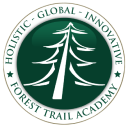Big Idea 3: Changes in matter involve the rearrangement and/or reorganization of atoms and/or the transfer of electrons.
Big Idea 5: The laws of thermodynamics describe the essential role of energy and explain and predict the direction of changes in matter.
Topics:- Energy changes that occur during a reaction
- Activation energy
- Endothermic and exothermic reactions
- Spontaneity
- Electrochemistry
Resources:- 3 Textbook:16.1-16.9, 17.1-17.7
- 3 ChemCollectiveVirtual Labs
- Activities:
- v Students willobserve videos of a selection of chemical reactions. For each reaction they will classify the type of reaction, write a balanced net ionic equation, describe the reaction, and determine the thermodynamic driving force for the reaction.
Labs:- Ø Cold Volcano:Students will use a coffee-cup calorimeter to calculate the change in enthalpy for the reaction between baking soda and vinegar. Students will be able to perform this hands-on experiment at home. (SP 1, 2, 5, 6)
- Ø Camping ProblemI-III: Students will use a chemcollective virtual lab to measure the enthalpy of a reaction. The effect of changing the concentration of the reactants on the enthalpy will be measured and students will create solutions to produce a specific temperature. (SP 1, 2, 3, 5, 6, 7)
- Ø Build a VoltaicCell: Students will build a voltaic cell at home to show how wet batteries work. Students will be able to perform this hands-on experiment at home. (SP 1, 2, 3, 5, 6)

